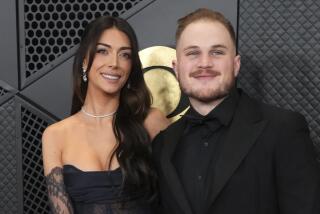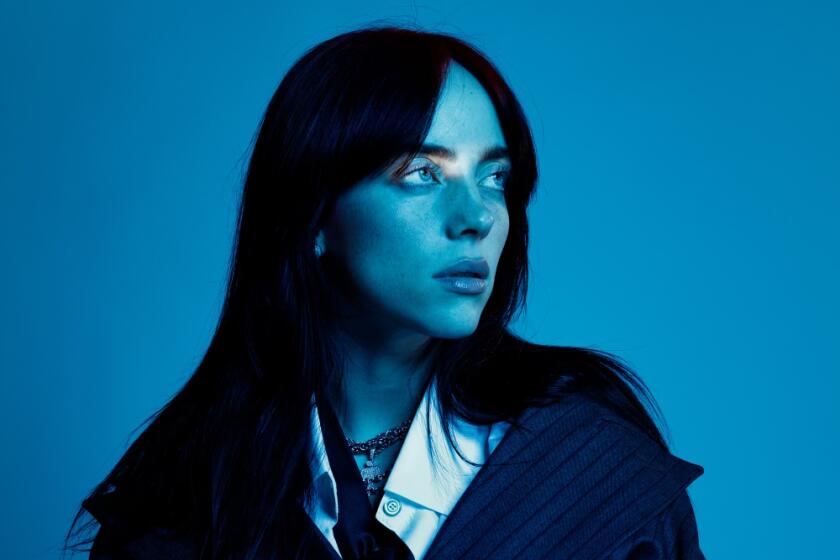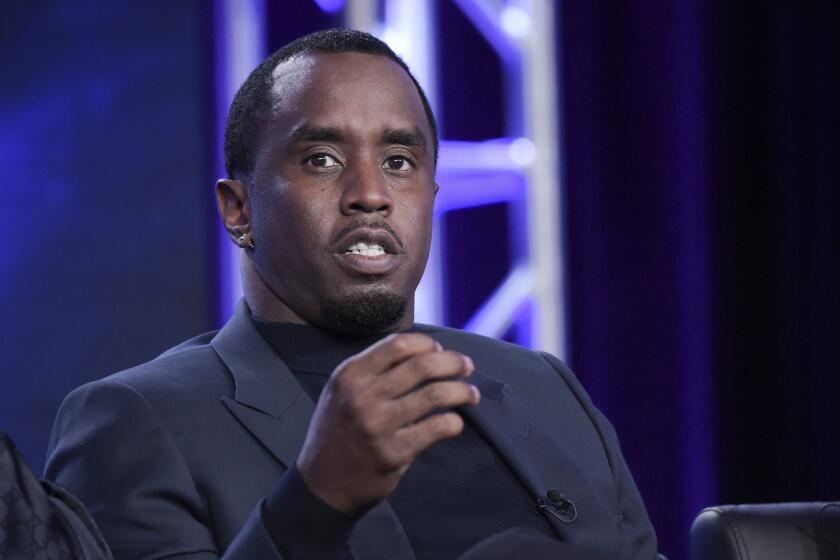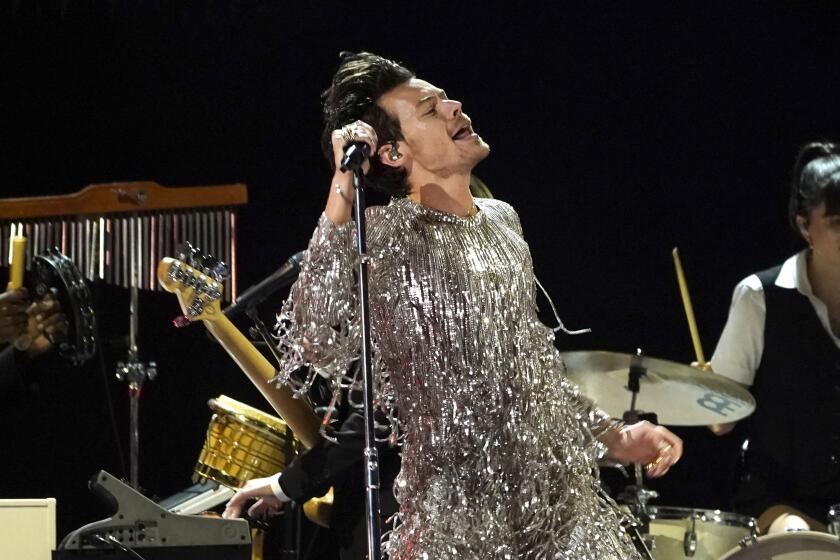At Whisky A Go-Go, applause for co-founder Elmer Valentine
Whisky A Go-Go co-founder Elmer Valentine got a posthumous love letter Monday night from many of the musicians, friends, family members and just plain fans who frequented his venerated West Hollywood club over the last 45 years.
Valentine was saluted with a street sign bearing his name outside the Whisky and an evening of toasts and music, the music led by Johnny Rivers, whose extended engagement as the venue’s opening act in 1964 put the club and the singer on the national map.
Among those on hand at the club that helped launch countless careers were Stephen Stills, Byrds co-founder Chris Hillman, South African trumpeter Hugh Masekela, British blues band leader John Mayall, Mamas & Papas singer Michelle Phillips, Monkees singer Micky Dolenz, producer Peter Asher and Valentine’s longtime friend Jack Nicholson.
Looking up to the stage from his spot on the floor about 15 feet back, Nicholson described Valentine as “a guy who looked like all seven dwarves.” The actor said one of his favorite quotes came from Valentine, a Chicago cop who moved west to start a new life in the entertainment business. “He used to say, ‘Some people score and they never know it. Jack, we scored, and we know it.’ ”
Doors drummer John Densmore didn’t play, except for a quick drum roll he rattled off in memory of Valentine before Rivers took the stage.
“I’ve gotta say, I never met a music club owner or promoter who cared more about musicians and the people who made it than Elmer Valentine,” said Densmore.
He was caught up in conversation with Ronnie Haran Mellen, the Whisky’s original talent booker, who first spotted the Doors at another club, the London Fog. “She came in on the last night we played there, the night we were fired. She came back to Elmer and said, ‘This is a band that has to be our house band.’ ” Valentine agreed, and the Doors’ run at the club put it on the fast track to becoming one of the most celebrated rock bands of the era.
Hillman laughed while recounting a night at the club in 1969 shortly after he’d left the Byrds to start the Flying Burrito Brothers with Gram Parsons. “Jerry Lee Lewis was there, and we were up there in the dressing rooms,” he said, pointing to the balcony. “Jerry Lee was telling Gram that he’d taught the Beatles everything they knew and they’d be nothing without him. I remember thinking at the time, ‘This is history.’ ”
Valentine’s old friend and business partner Lou Adler and Adler’s son Nic organized Monday’s tribute. “We waited a little bit after his passing to do this,” said Nic Adler, who now oversees operations at the Roxy, which his father, Valentine and other partners opened in 1973. “Elmer wouldn’t have wanted any crying. He . . . wanted laughter and people telling stories, and that’s what is happening tonight.”
The music Monday revolved around the Whisky’s first wave of success in the ‘60s, some reflecting tacitly or directly the musicians’ formative experiences on the Sunset Strip.
Rivers, who recorded a string of live albums at the Whisky, sang several of his mid-’60s hits, including the super-spy theme “Secret Agent Man,” as well as his swampy Southern pop-rock versions of Chuck Berry’s “Memphis” and “Maybelline.” Stills offered “For What It’s Worth (Stop, Hey What’s That Sound)” and “Love the One You’re With.” Hillman reeled off the Byrds’ “So You Want to Be a Rock ‘N’ Roll Star.”
The opening of the Whisky helped revive a part of Hollywood that had been a destination for Clark Gable, Humphrey Bogart and other members of Tinseltown’s elite in the 1930s and ‘40s. Folk music fans had the Ash Grove, the Troubadour, PJ’s and McCabe’s in the late ‘50s and early ‘60s, but rock music hadn’t established a beachhead.
Valentine, who was part owner of PJ’s, came upon a foundering club on the Sunset Strip called the Party that he wanted to take over. He offered Rivers a one-year contract.
Valentine patterned his operation after a European discotheque called the Whisky A Go-Go that he’d visited in Paris the previous summer, where patrons danced while DJs spun records, a form of night life that hadn’t caught on in the U.S. yet. Valentine hired female disc jockeys to play records in the breaks between Rivers’ three live sets each night so patrons could continue dancing.
Valentine is credited with starting the go-go craze stateside.
“He put them above the bandstand,” Rivers said. “They were right over my head. That bandstand was so small -- it was only about 5 by 7 feet. . . . Eventually, they had to put up a guardrail in front of the stage because dancers would be swinging their arms and they kept hitting the mike stand and whapping me in the mouth.”
The Whisky became one of the focal points of L.A.’s mushrooming rock scene, hosting future Hall of Fame acts such as the Byrds, Buffalo Springfield and the Doors. Soon, international acts including the Who and the Kinks were dropping in to play. In the ‘70s, it was also a breeding ground for progressive and hard rock. Van Halen built much of its early following through repeated appearances at the Whisky.
The club’s fortunes ebbed and flowed over the years. Valentine and partner Mario Maglieri stopped booking live rock acts for a time in the mid-’70s when the folk singer-songwriting boom hit. They turned it into a dance club and then devoted the room to stage musicals.
When the punk-rock revolution began around 1976, the Whisky returned to live music, hosting the Runaways, X, the Motels and others on L.A.’s punk and new wave scene. And it imported such influential acts as the Ramones, Talking Heads, Blondie, the Police and Elvis Costello.
Another lull came in the early ‘80s, and the Whisky closed for a couple of years, reopening during the pay-to-play era in Southland music, when bands were required to pay upfront for a performance slot and hope to generate a profit by selling the tickets themselves.
“Elmer remained in the background -- he was kind of a shy person,” Rivers said. “But he always enjoyed showcasing new acts. He always wanted to give talented young artists a break, and when one of them became successful, it was almost like it was one of his kids.”
--
More to Read
The biggest entertainment stories
Get our big stories about Hollywood, film, television, music, arts, culture and more right in your inbox as soon as they publish.
You may occasionally receive promotional content from the Los Angeles Times.






